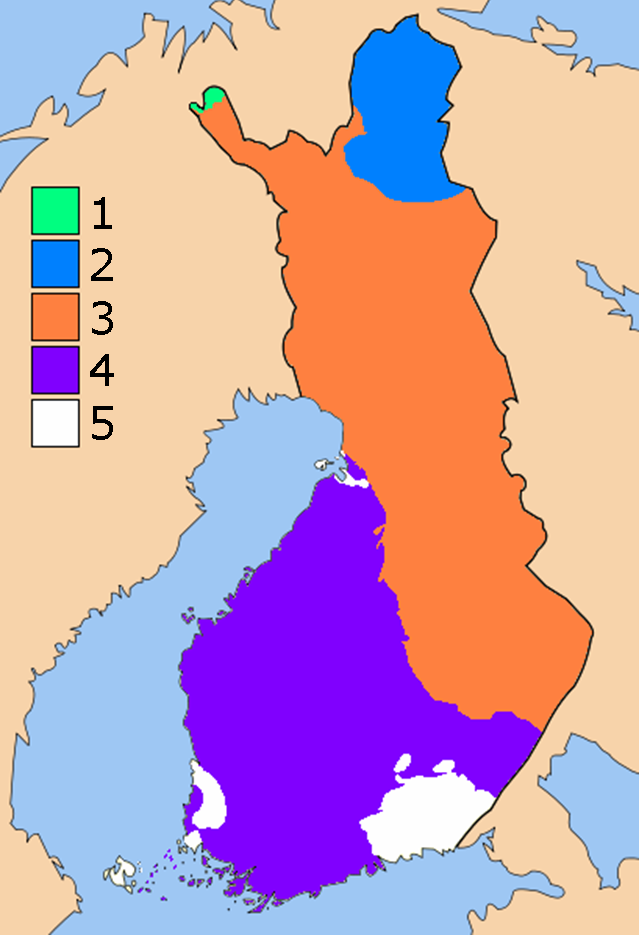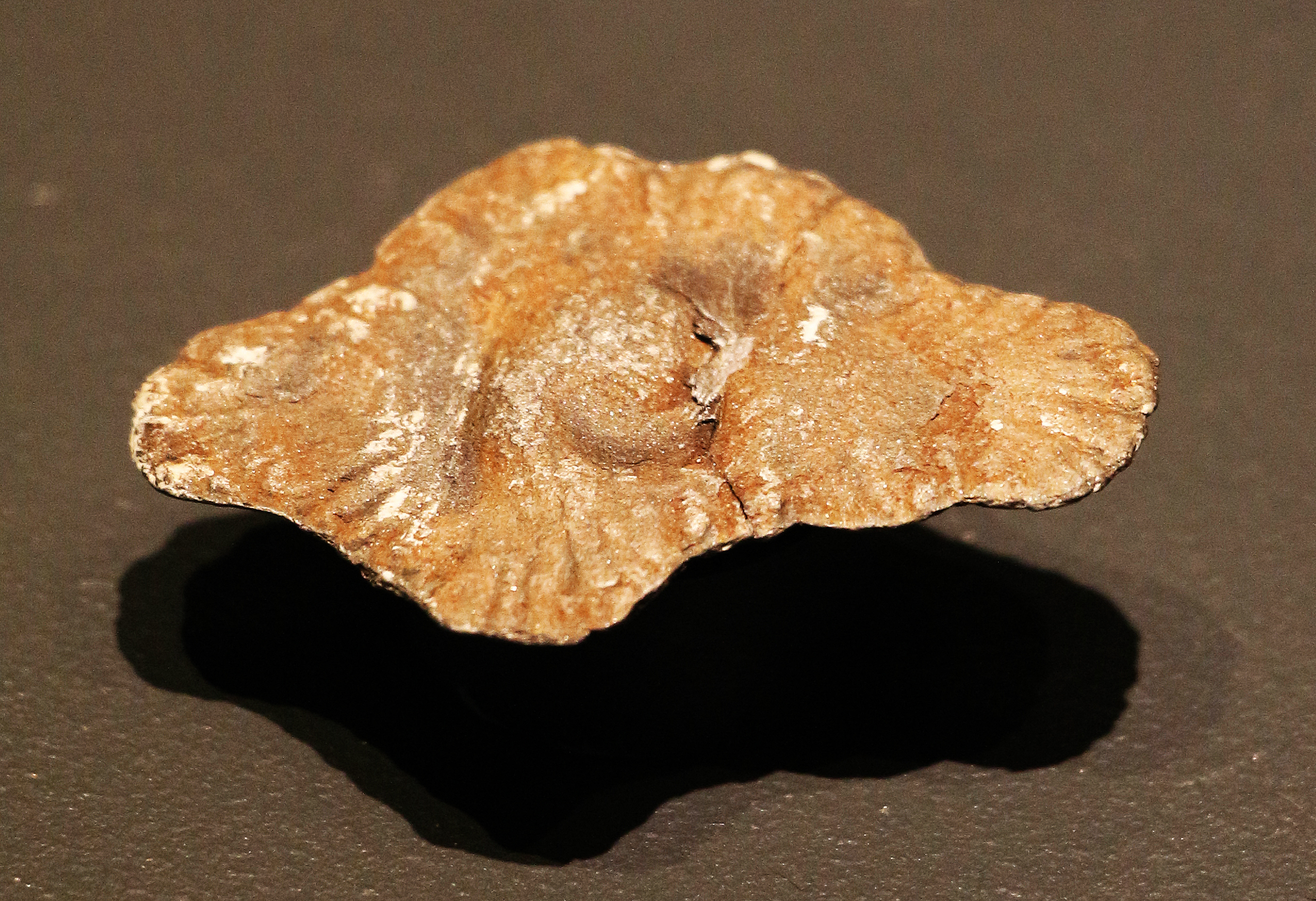|
Palaeoproterozoic
The Paleoproterozoic Era (;, also spelled Palaeoproterozoic), spanning the time period from (2.5–1.6 Ga), is the first of the three sub-divisions ( eras) of the Proterozoic Eon. The Paleoproterozoic is also the longest era of the Earth's geological history. It was during this era that the continents first stabilized. Paleontological evidence suggests that the Earth's rotational rate ~1.8 billion years ago equated to 20-hour days, implying a total of ~450 days per year. Atmosphere Before the enormous increase in atmospheric oxygen, almost all existing lifeforms were anaerobic organisms whose metabolism was based on a form of cellular respiration that did not require oxygen. Free oxygen in large amounts is toxic to most anaerobic organisms. Consequently, most died when the atmospheric free oxygen levels soared in an extinction event called the Great Oxidation Event, which brought atmospheric oxygen levels to up to 10% of their current level. The only creatures that sur ... [...More Info...] [...Related Items...] OR: [Wikipedia] [Google] [Baidu] |
Great Oxygenation Event
The Great Oxidation Event (GOE), also called the Great Oxygenation Event, the Oxygen Catastrophe, the Oxygen Revolution, the Oxygen Crisis, or the Oxygen Holocaust, was a time interval during the Paleoproterozoic era when the Earth's atmosphere and the shallow ocean first experienced a rise in the amount of oxygen. This began approximately 2.460–2.426 Ga (billion years) ago, during the Siderian period, and ended approximately 2.060 Ga, during the Rhyacian. Geological, isotopic, and chemical evidence suggests that biologically-produced molecular oxygen ( dioxygen, O2) started to accumulate in Earth's atmosphere and changed it from a weakly reducing atmosphere practically free of oxygen into an oxidizing atmosphere containing abundant oxygen, with oxygen levels being as high as 10% of their present atmospheric level by the end of the GOE. The sudden injection of toxic oxygen into an anaerobic biosphere may have caused the extinction of many existing anaerobic spe ... [...More Info...] [...Related Items...] OR: [Wikipedia] [Google] [Baidu] |
Svecofennian Orogeny
The Svecofennian orogeny is a series of related orogenies that resulted in the formation of much of the continental crust in what is today Sweden and Finland plus some minor parts of Russia. The orogenies lasted from about 2000 to 1800 million years ago during the Paleoproterozoic Era. The resulting orogen is known as the Svecofennian orogen or Svecofennides. To the west and southwest the Svecofennian orogen limits with the generally younger Transscandinavian Igneous Belt. It is assumed that the westernmost fringes of the Svecofennian orogen have been reworked by the Sveconorwegian orogeny just as the western parts of the Transscandinavian Igneous Belt has. The Svecofennian orogeny involved the accretion of numerous island arcs in such manner that the pre-existing craton grew with this new material from what is today northeast to the southwest. The accretion of the island arcs was also related to two other processes that occurred in the same period; the formation of magma that ... [...More Info...] [...Related Items...] OR: [Wikipedia] [Google] [Baidu] |
Francevillian Biota
The Francevillian biota (also known as Gabon macrofossils or Gabonionta) is a group of 2.1-billion-year-old Palaeoproterozoic, macroscopic organisms known from fossils found in Gabon in the Palaeoproterozoic Francevillian B Formation, a black shale province. The fossils are postulated to be evidence of the earliest form of multicellular life. They were discovered by an international team led by the Moroccan-French geologist Abderrazak El Albani, of the University of Poitiers, France. While they have yet to be assigned to a formal taxonomic position, they have been informally and collectively referred to as the "Gabonionta" by the Natural History Museum Vienna in 2014. Morphology The fossil organisms are up to in size. Their bodies were flattened disks with a characteristic morphology, including circular and elongated individuals. A spherical to ellipsoidal central body is bounded by radial structures. The fossils show three-dimensionality and coordinated growth. Cell-cell c ... [...More Info...] [...Related Items...] OR: [Wikipedia] [Google] [Baidu] |
Eukaryotes
Eukaryotes () are organisms whose cells have a nucleus. All animals, plants, fungi, and many unicellular organisms, are Eukaryotes. They belong to the group of organisms Eukaryota or Eukarya, which is one of the three domains of life. Bacteria and Archaea (both prokaryotes) make up the other two domains. The eukaryotes are usually now regarded as having emerged in the Archaea or as a sister of the Asgard archaea. This implies that there are only two domains of life, Bacteria and Archaea, with eukaryotes incorporated among archaea. Eukaryotes represent a small minority of the number of organisms, but, due to their generally much larger size, their collective global biomass is estimated to be about equal to that of prokaryotes. Eukaryotes emerged approximately 2.3–1.8 billion years ago, during the Proterozoic eon, likely as flagellated phagotrophs. Their name comes from the Greek εὖ (''eu'', "well" or "good") and κάρυον (''karyon'', "nut" or "kernel"). ... [...More Info...] [...Related Items...] OR: [Wikipedia] [Google] [Baidu] |
Nagssugtoqidian Orogeny
The Nagssugtoqidian orogeny was a late Paleoproterozoic mountain-building event that affected Greenland during the period 1.91 to 1.77 Ga. The orogenic belt formed during this event marks the northern boundary of the mainly Archaean North Atlantic Craton. It was first recognised by Ramberg in 1949, based on its effect on the Kangaamiut dike swarm. The subsequent recognition of magmatic terranes representing past island arcs and two potential sutures representing now vanished subduction zones within the belt, have enabled its interpretation in terms of plate tectonics Plate tectonics (from the la, label= Late Latin, tectonicus, from the grc, τεκτονικός, lit=pertaining to building) is the generally accepted scientific theory that considers the Earth's lithosphere to comprise a number of large t .... References {{Reflist Orogenies of North America Proterozoic North America Geology of Greenland Paleoproterozoic orogenies ... [...More Info...] [...Related Items...] OR: [Wikipedia] [Google] [Baidu] |
Earth-Science Reviews
''Earth-Science Reviews'' is a monthly peer-reviewed scientific journal published by Elsevier. It covers all aspects of Earth sciences. The editors-in-chief for this journal are A. Chin, C. Doglioni, J.L. Florsheim, M.F.J. Flower, G.R. Foulger, A. Gómez-Tuena, S. Khan, S. Marriott, A.D. Miall, G.F. Panza, J.A. Sanchez-Cabeza, M. Strecker, E.S. Takle, M. Widdowson, and P.B. Wignall. Abstracting and indexing This journal is abstracted and indexed by: According to the ''Journal Citation Reports'', the journal has a 2012 impact factor The impact factor (IF) or journal impact factor (JIF) of an academic journal is a scientometric index calculated by Clarivate that reflects the yearly mean number of citations of articles published in the last two years in a given journal, as ... of 7.339. References External links {{Authority control Earth and atmospheric sciences journals Elsevier academic journals English-language journals Monthly journals Publications established ... [...More Info...] [...Related Items...] OR: [Wikipedia] [Google] [Baidu] |
Eburnean Orogeny
The Eburnean orogeny, or Eburnean cycle, was a series of tectonic, metamorphic and plutonic events in what is now West Africa during the Paleoproterozoic era about 2200–2000 million years ago. During this period the Birimian domain in West Africa was established and structured. Eburnian faults are found in the Eglab shield to the north of the West African craton and in the Man Shield to the south of the craton. There is evidence of three major Eburnean magmatic events in the Eglab shield. Between 2210 and 2180 Ma, a metamorphosed batholith was formed in the Lower Reguibat Complex (LRC). Around 2090 Ma, a syntectonic trondhjemitic pluton intruded into the Archaean reelects of the Chegga series. Around 2070 Ma an asthenospheric The asthenosphere () is the mechanically weak and ductile region of the upper mantle of Earth. It lies below the lithosphere, at a depth between ~ below the surface, and extends as deep as . However, the lower boundary of the asthenosphere is n ... [...More Info...] [...Related Items...] OR: [Wikipedia] [Google] [Baidu] |
Orogeny
Orogeny is a mountain building process. An orogeny is an event that takes place at a convergent plate margin when plate motion compresses the margin. An '' orogenic belt'' or ''orogen'' develops as the compressed plate crumples and is uplifted to form one or more mountain ranges. This involves a series of geological processes collectively called orogenesis. These include both structural deformation of existing continental crust and the creation of new continental crust through volcanism. Magma rising in the orogen carries less dense material upwards while leaving more dense material behind, resulting in compositional differentiation of Earth's lithosphere ( crust and uppermost mantle). A synorogenic process or event is one that occurs during an orogeny. The word "orogeny" () comes from Ancient Greek (, , + , , ). Although it was used before him, the term was employed by the American geologist G. K. Gilbert in 1890 to describe the process of mountain-building as distinguishe ... [...More Info...] [...Related Items...] OR: [Wikipedia] [Google] [Baidu] |
Limpopo Belt
The Limpopo Belt is located in South Africa and Zimbabwe, runs E-NE, and joins the Kaapvaal Craton to the south with the Zimbabwe Craton to the north. The belt is of high-grade metamorphic rocks that have undergone a long cycle of metamorphism and deformation that ended 2.0 billion years ago, after the stabilisation of the adjacent massifs. The belt comprises 3 components: the Central Zone, the North Marginal Zone and the South Marginal Zone. Ca. 3.2-2.9 Ga Limpopo Central Zone The 250 km wide Limpopo belt of southern Africa is an east-northeast trending zone of granulite facies tectonites separating the granitoid-greenstone terranes of the Kaapvaal and Zimbabwe cratons. Large scale ductile shear zones are an integral part of Limpopo belt architecture. They define the boundaries between the belt and the adjacent cratons and separate internal zones within the belt. The shear zones forming the external (northern, southern and western) margins of the belt are interpreted as upli ... [...More Info...] [...Related Items...] OR: [Wikipedia] [Google] [Baidu] |
Stromatolites
Stromatolites () or stromatoliths () are layered sedimentary formations ( microbialite) that are created mainly by photosynthetic microorganisms such as cyanobacteria, sulfate-reducing bacteria, and Pseudomonadota (formerly proteobacteria). These microorganisms produce adhesive compounds that cement sand and other rocky materials to form mineral " microbial mats". In turn, these mats build up layer by layer, growing gradually over time. A stromatolite may grow to a meter or more. Although they are rare today, fossilized stromatolites provide records of ancient life on Earth. Morphology Stromatolites are layered, biochemical, accretionary structures formed in shallow water by the trapping, binding and cementation of sedimentary grains in biofilms (specifically microbial mats), through the action of certain microbial lifeforms, especially cyanobacteria. They exhibit a variety of forms and structures, or morphologies, including conical, stratiform, domal, columnar, and bran ... [...More Info...] [...Related Items...] OR: [Wikipedia] [Google] [Baidu] |
Trans-Hudson Orogeny
The Trans-Hudson orogeny or Trans-Hudsonian orogeny was the major mountain building event (orogeny) that formed the Precambrian Canadian Shield and the North American Craton (also called Laurentia), forging the initial North American continent. It gave rise to the Trans-Hudson orogen (THO), or Trans-Hudson Orogen Transect (THOT), (also referred to as the Trans-Hudsonian Suture Zone (THSZ) or Trans-Hudson suture) which is the largest Paleoproterozoic orogenic belt in the world. It consists of a network of belts that were formed by Proterozoic crustal accretion and the collision of pre-existing Archean continents. The event occurred 2.0–1.8 billion years ago. The Trans-Hudson orogen sutured together the Hearne-Rae, Superior, and Wyoming cratons to form the cratonic core of North America in a network of Paleoproterozoic orogenic belts. These orogenic belts include the margins of at least nine independent microcontinents that were themselves sections of at least three form ... [...More Info...] [...Related Items...] OR: [Wikipedia] [Google] [Baidu] |

.jpg)



